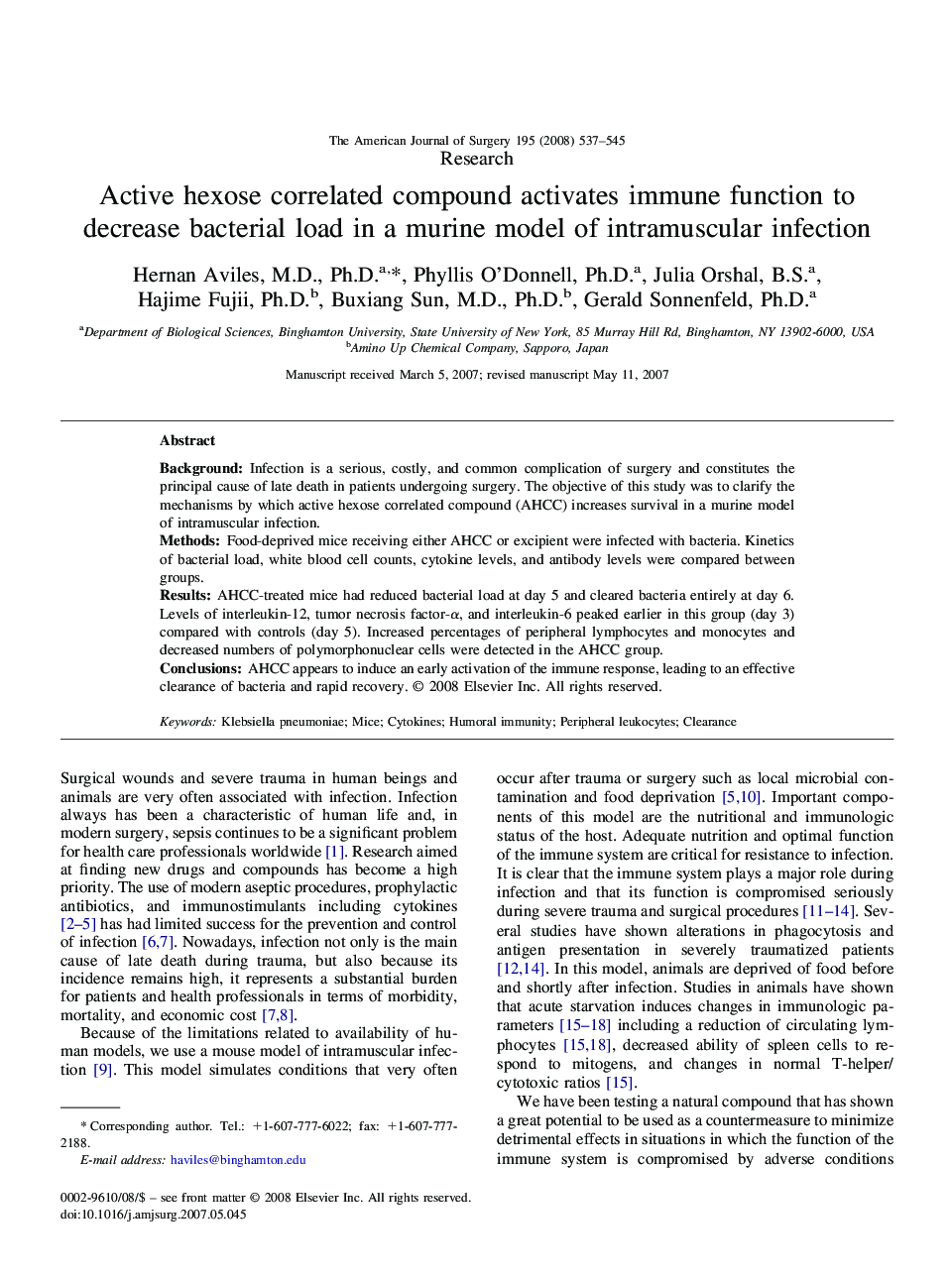| Article ID | Journal | Published Year | Pages | File Type |
|---|---|---|---|---|
| 4281163 | The American Journal of Surgery | 2008 | 9 Pages |
BackgroundInfection is a serious, costly, and common complication of surgery and constitutes the principal cause of late death in patients undergoing surgery. The objective of this study was to clarify the mechanisms by which active hexose correlated compound (AHCC) increases survival in a murine model of intramuscular infection.MethodsFood-deprived mice receiving either AHCC or excipient were infected with bacteria. Kinetics of bacterial load, white blood cell counts, cytokine levels, and antibody levels were compared between groups.ResultsAHCC-treated mice had reduced bacterial load at day 5 and cleared bacteria entirely at day 6. Levels of interleukin-12, tumor necrosis factor-α, and interleukin-6 peaked earlier in this group (day 3) compared with controls (day 5). Increased percentages of peripheral lymphocytes and monocytes and decreased numbers of polymorphonuclear cells were detected in the AHCC group.ConclusionsAHCC appears to induce an early activation of the immune response, leading to an effective clearance of bacteria and rapid recovery.
